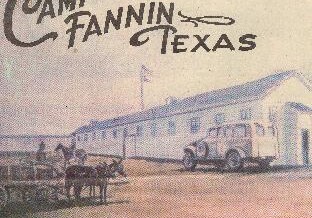
I sat near the front of the auditorium. I was the fourth to speak, so I wanted to be as near the podium as possible. But, I sat in the section to the left. The center area was for the Veterans.
There were only two.
It was the 74th memorial service for the Camp Fannin Association, and it was held at UT Health Northeast, which now occupies the site of one of the largest military training facilities of the Second World War. I was asked to give part of the welcome.
I did some quick math in my head. If these two men were 17 or 18 when they were at Camp Fannin between 1943 and 1946, these two gentlemen are 90 or older.
I’m a huge fan and student of history, but there was much I learned that day about Camp Fannin and about all of those who were at the camp to train before they were sent to the front lines to defend our country.
For many, it was a one-way trip.
After the Japanese attacked Pearl Harbor in 1941, the men and women of what former news anchor Tom Brokaw appropriately called, “The Greatest Generation,” mobilized and geared up in very short order to fight for our freedom and our future.
Factories that made automobiles were quickly converted to build Jeeps, planes, and other needed mechanized tools of war.
Women left the home to work the jobs that were vacated by the men who enlisted. Many of those men who enlisted came to Camp Fannin.
Just as the factories were converted for the war effort, the United States government took 14,000 acres near what is now the area on Highways 271 and 155, and in six months, built 600 barracks, a hospital, roads, and all of the other things needed for a training facility for soldiers.
Former Smith County Sheriff J.B. Smith was the featured speaker at the memorial, and he showed photos and shared many of the stats about Camp Fannin.
A small many as 40,000 men at once were at Camp Fannin, he said.
Estimates put the total number of men who trained at the U.S. Army Infantry Replacement Training Center at around 200,000.
In 1944, 16,000 soldiers were marched from Camp Fannin to downtown Tyler. The march circled the town square and then made its way back to the camp.
At that time, It was one of the largest military marches in the country.
I thought about what that must’ve been like to witness. Before television, events such as this one would’ve been available as a photograph in the newspaper or a radio report. It had to be quite amazing to see.
Many of those who are from the Tyler area who were here during the short time that Camp Fannin was here are now gone. So, all that remains of events such as the march are the photographs.
There were other photos of a wartime Christmas. What appeared to be one of the barracks had the letters, “Merry Christmas” sitting on the roof with lights to illuminate them.
There were many pictures of military generals standing and inspecting troops. They were watching the enlisted men training, firing weapons, and in one photo, pushing a Jeep out of the mud.
As J.B. pointed out, the enlisted men always got the grunt work. I’m sure they still do.
As I listened, I glanced back at the two Camp Fannin Veterans. They were quiet and attentive. I tried to imagine what was going through their minds. They were seeing photos from this period in their lives. Did they remember when these were taken? Were they there for any of the events we were seeing?
Americans weren’t the only ones here in East Texas at that time. German prisoners of war were also held at the camp.
Just two days before the memorial service, a large model ship, built by a German POW, was donated to the Camp Fannin Association by the daughter of a lieutenant who had served at the camp.
The German built the model from things he had available. The ship is on loan to UT Health and is on display there.
For a few years, East Texas was the destination for thousands. Some who came willingly, and others who were captured and held. But, each person was someone’s son, brother, or husband.
The Camp Fannin Association works to keep their sacrifice and the memory of what they did alive. We owe it to those who came before us to support their efforts and to learn our own community’s history.
I was honored to be a part of the memorial and to learn more about the thousands of heroes who called Tyler home as they trained to put their lives on the line for their fellow man and future generations.
Only a few are still with us. This day there were two.
©2017 John Moore
To read additional blogs, visit johnmoore.net/blog
APR
2017
